I used to write “Species Saturdays.” Short posts about a single species, published on Saturdays.1 I want to start again.
Red-breasted Merganser (Mergus serrator)
The first thing you’ll notice about a Red-breasted Merganser is its hairdo. American Bird Conservancy says the bird’s “shaggy-looking double crest…reminds some of a bad case of ‘bed head.’” The Cornell Lab concurs: Mergus serrator is “shaggy-headed.”
The bird has a dark green head, dark enough to look black. Red eyes, a red bill. If you look and it’s not underwater, you can see the Red-breasted Merganser’s namesake: a reddish breast—speckled with black. Males are larger than females.
The Cornell Lab says this duck is sometimes referred to as “the sawbill.” Its bill is serrated to help grip slippery fish. The serrated bill is the reason for the name, serrator, American Bird Conservancy explains. iNaturalist adds: “serrator is Latin for sawyer and is ultimately from serra, meaning saw.”
Common Merganser (Mergus merganser) also have serrated bills, so how is Mergus serrator different? It’s a saltier duck. I’ve never seen Mergus merganser in salt water, but if it’s winter and I’m birding the coast I’ll see serrator. They winter in salt water.
Another difference you can keep in your quiver of duck facts for cocktail party small talk2 is unlike other mergansers, usually cavity-nesters, the Red-breasted is a ground-nester.
You can’t really bird by ear for sawbill. Audubon explains they’re typically silent, but make “various croaking and grunting notes during courtship.” After all that croaky courtship, they form a seasonally monogamous pair. After breeding, the Cornell Lab says, “the male takes off at the beginning of incubation, leaving the female to tend the young alone.”
It’s easy, for some reason, to get more excited about other ducks than Red-breasted Merganser. Bufflehead (Bucephala albeola) are criminally adorable; Harlequin (Histrionicus histrionicus) are perplexingly beautiful; Northern Pintail (Anas acuta) are regal.
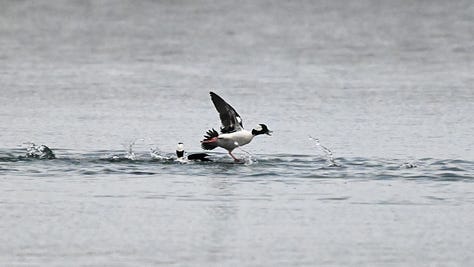
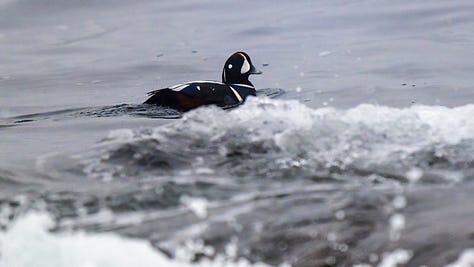
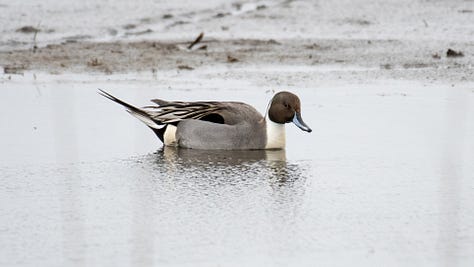
I don’t know why, but it’s harder with Mergus serrator. More than once I’ve gotten a duck in my binoculars or viewfinder and realized with a disappointed sigh: “Red-breasted.”
One morning I unexpectedly came upon a raft of serrator very close in calm water. I kicked myself. Such beautiful ducks! How could I ever not be awestruck?
The white wing patches got me that day. I preach we should appreciate common birds. I do: chickadee, titmouse, redtail, Downy Woodpecker (Dryobates pubescens), Double-crested Cormorant (Nannopterum auritum).
The last domino to fall was Red-breasted Merganser. I’m glad it did
How to become a sought-after conversation companion: never shut up about ducks.
Another cocktail party fact: The Red-breasted Merganser is the fastest duck. It was clocked at “100 mph while being pursued by an airplane,” Ducks Unlimited explains. This beat “the previous speed record held by a canvasback clocked at 72 mph.” I assume you knew this,
, being Substack’s Canvasback guy (Aythya valisineria).

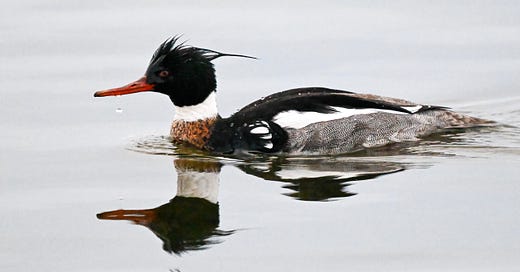


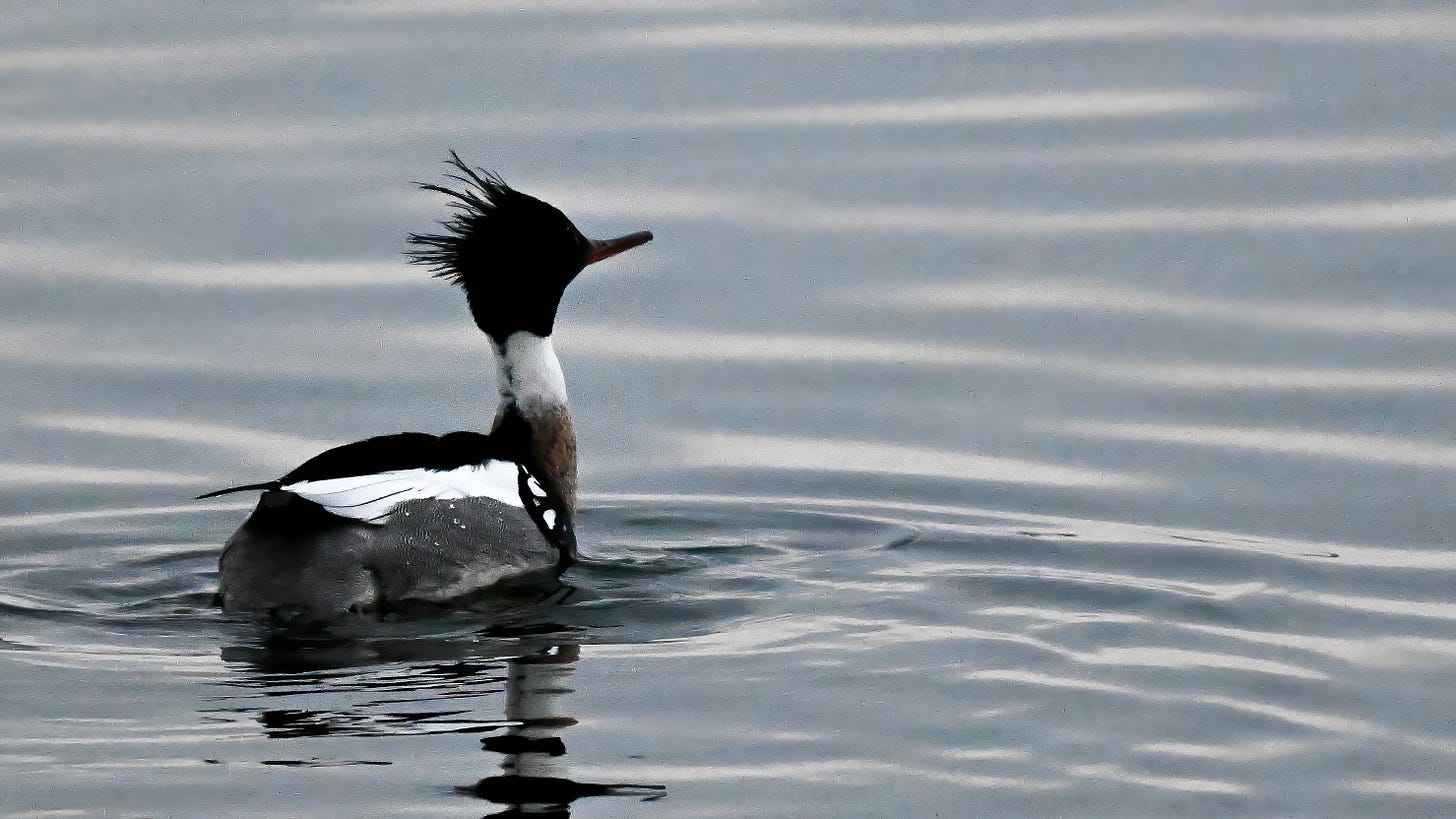

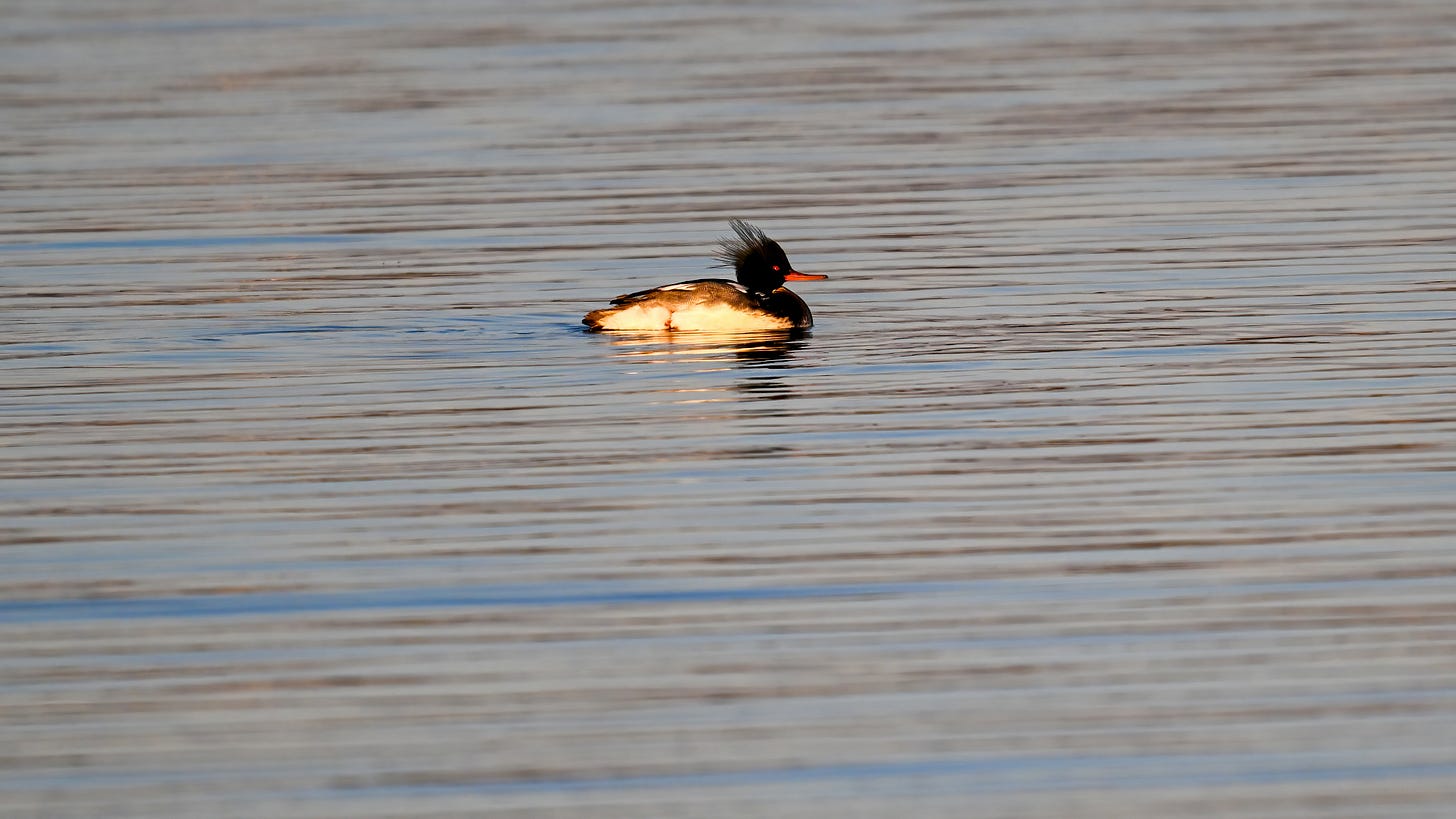
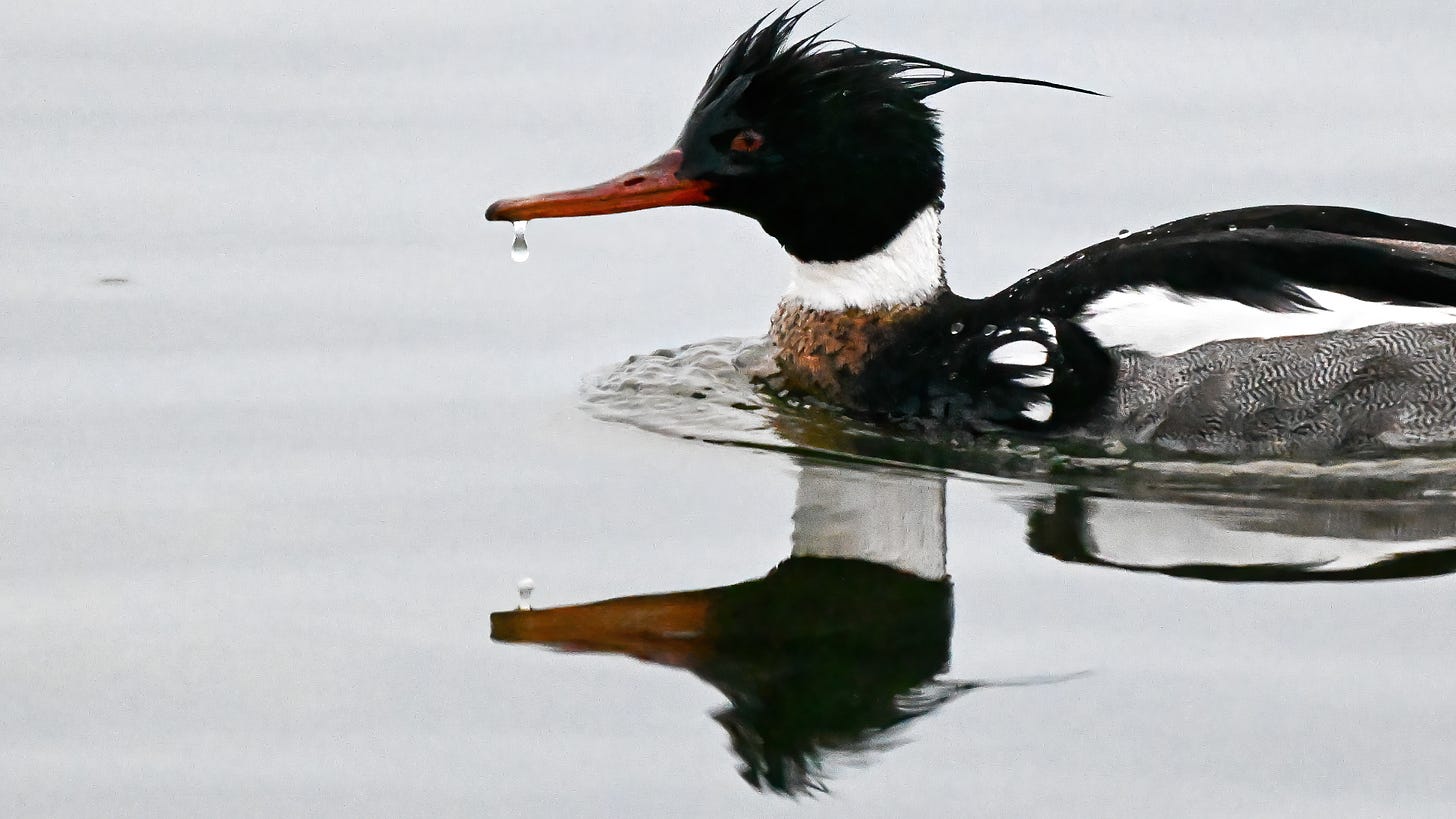
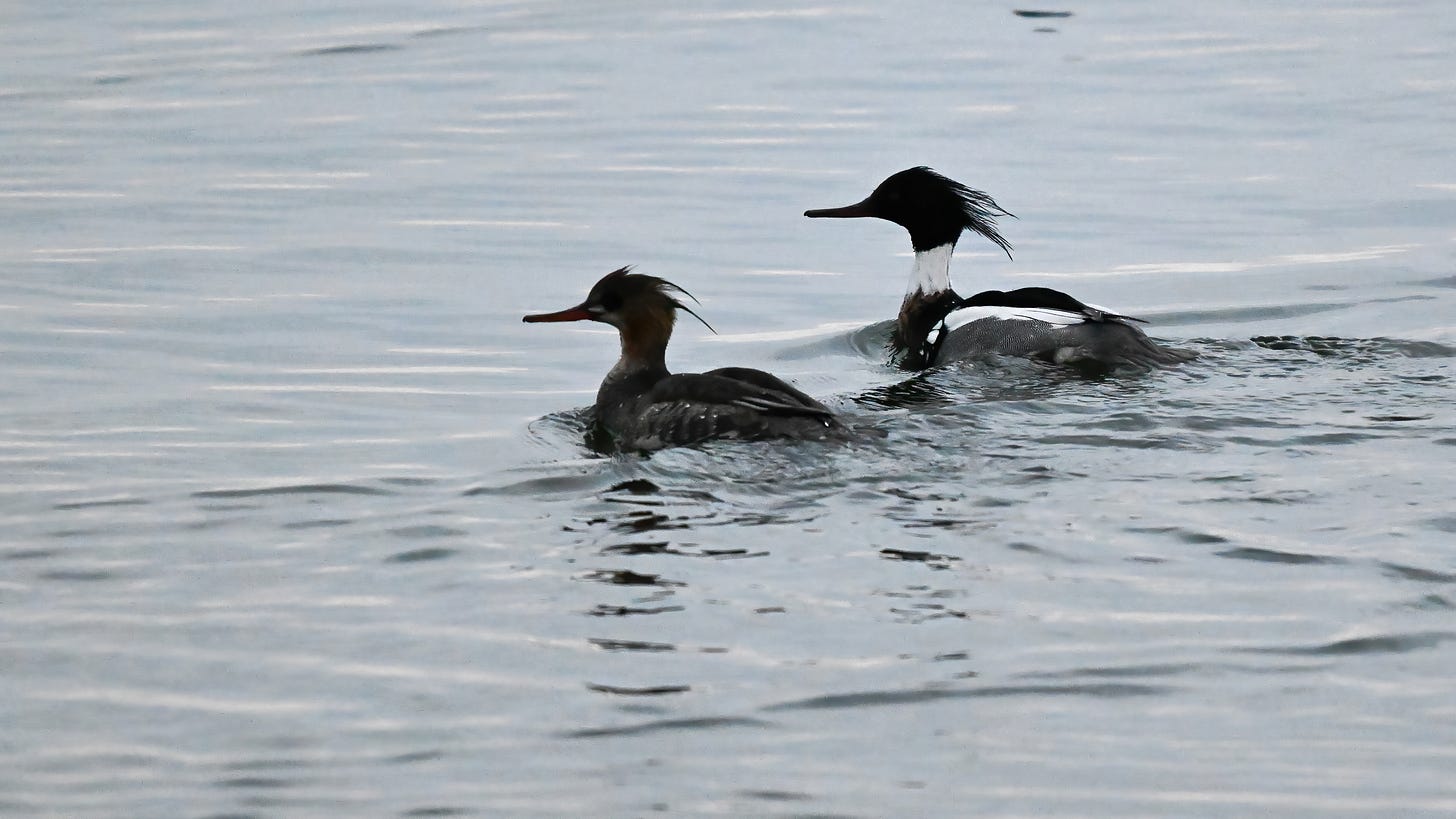

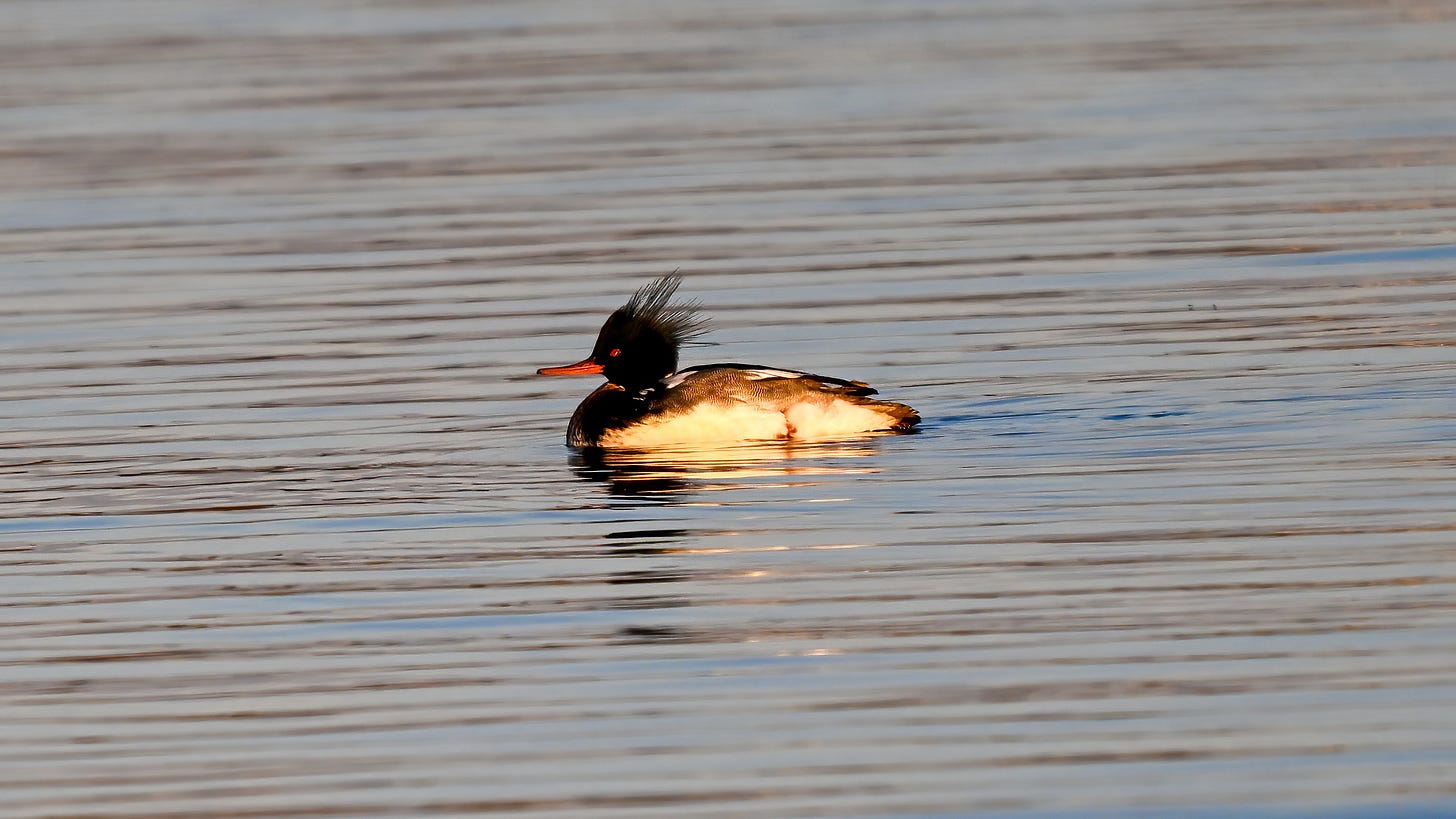
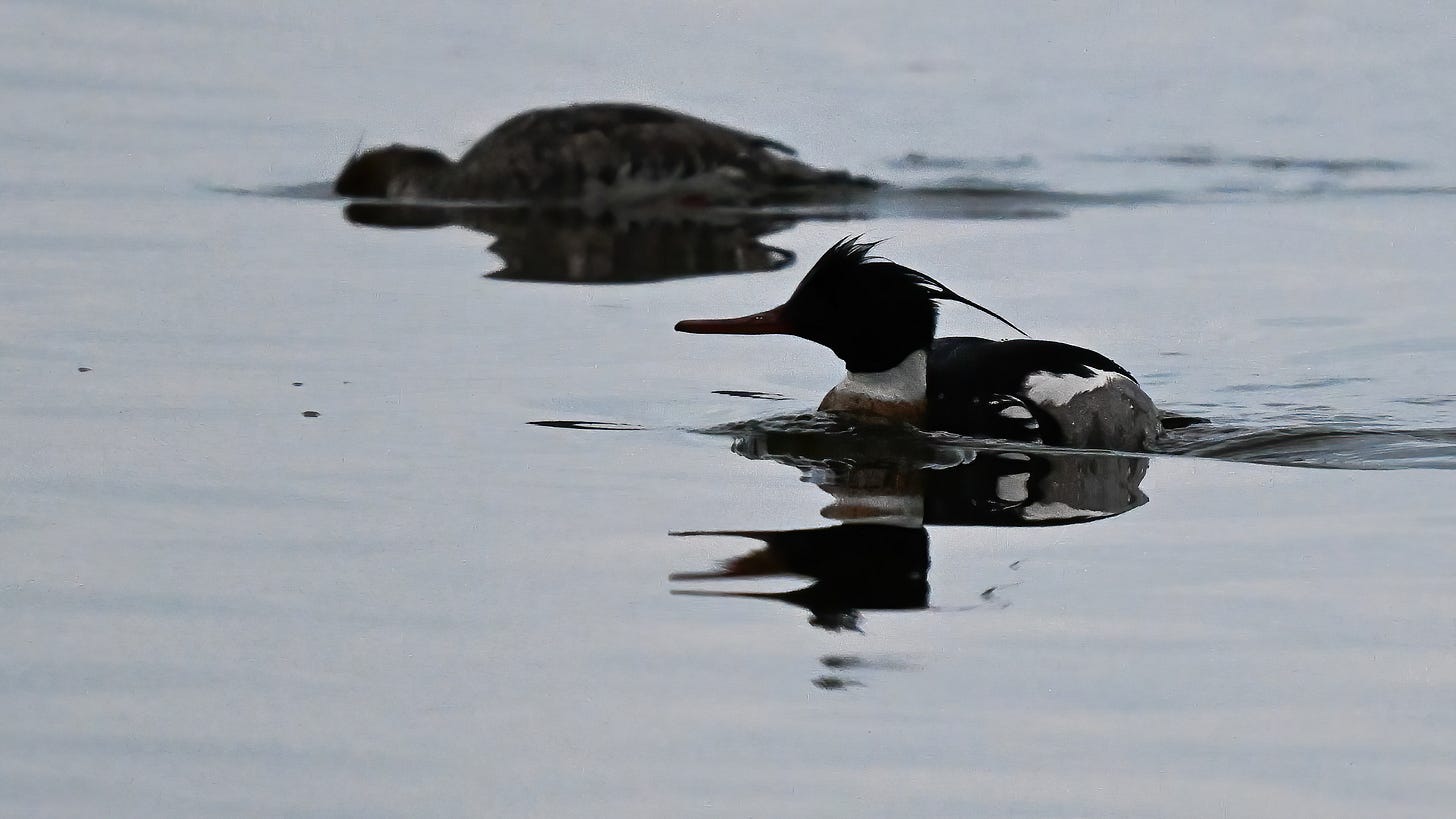
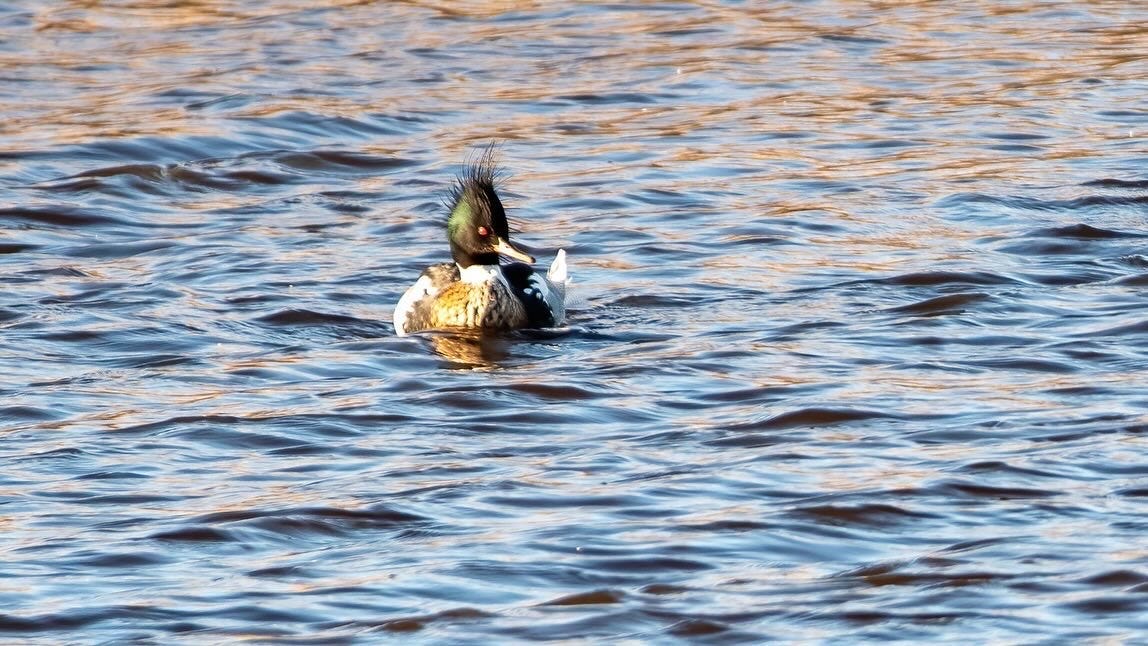
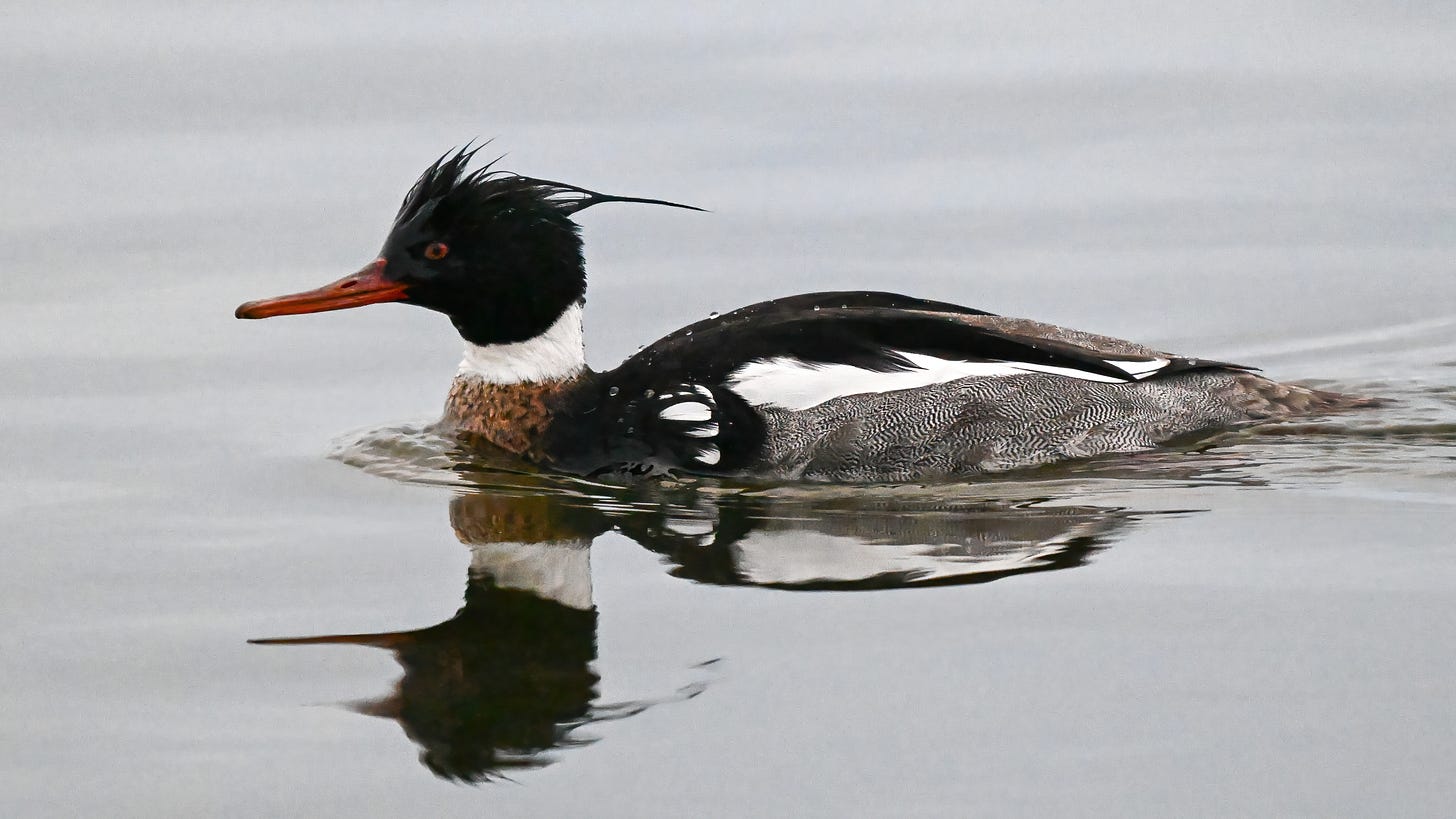


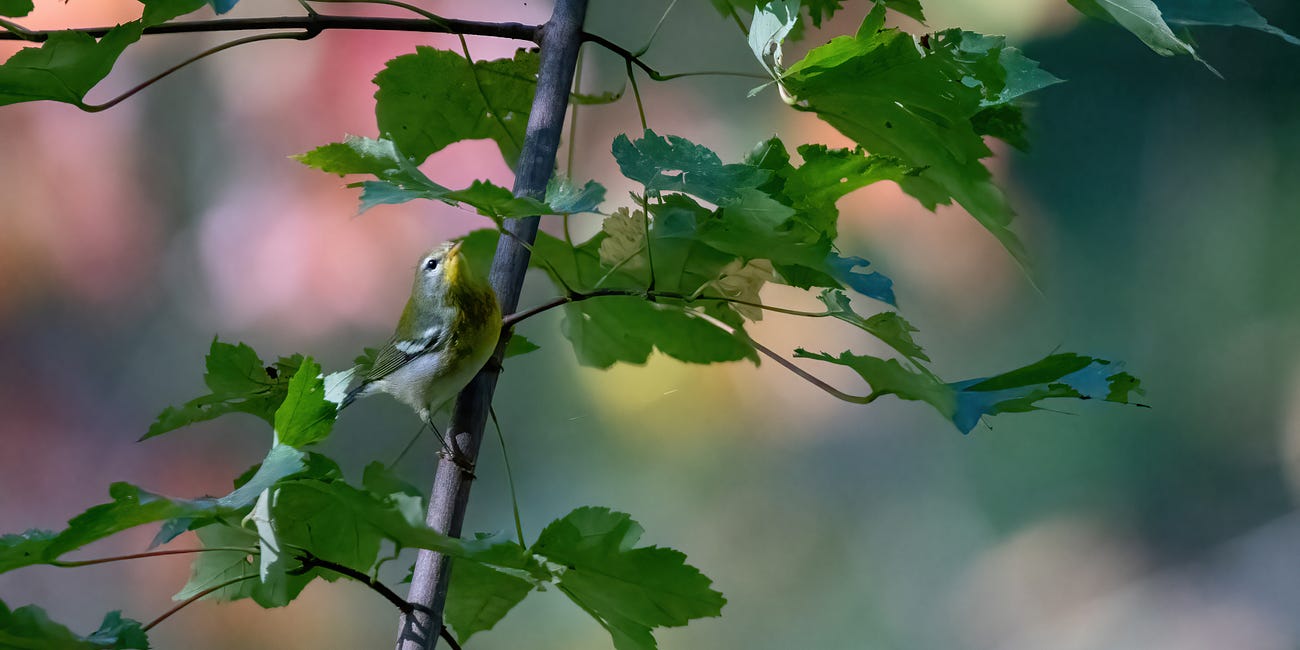

My favorite duck. Thanks for featuring him. Every time I catch a glimpse of myself in the bathroom mirror first thing in the morning, I mumble, "Merganser" in passing. Lovely photos, James.
Great article, and I think they're pretty cool looking. My question is why is it being persued by an airplane. Did he do something wrong? 🤔